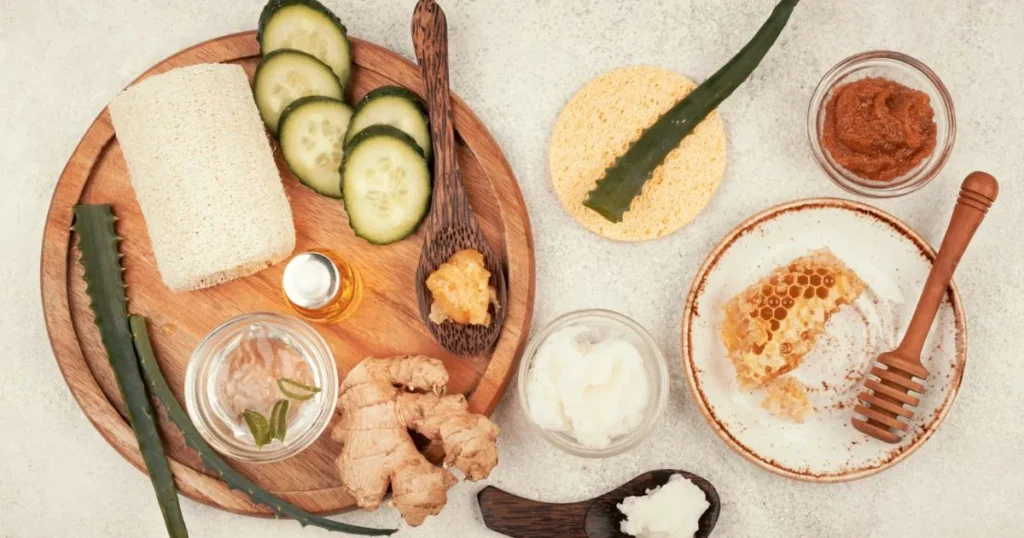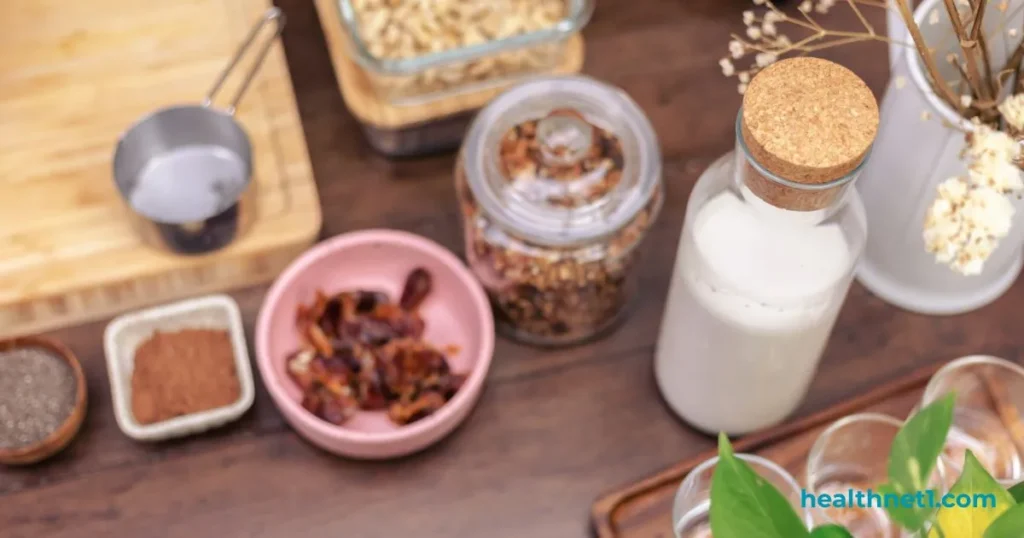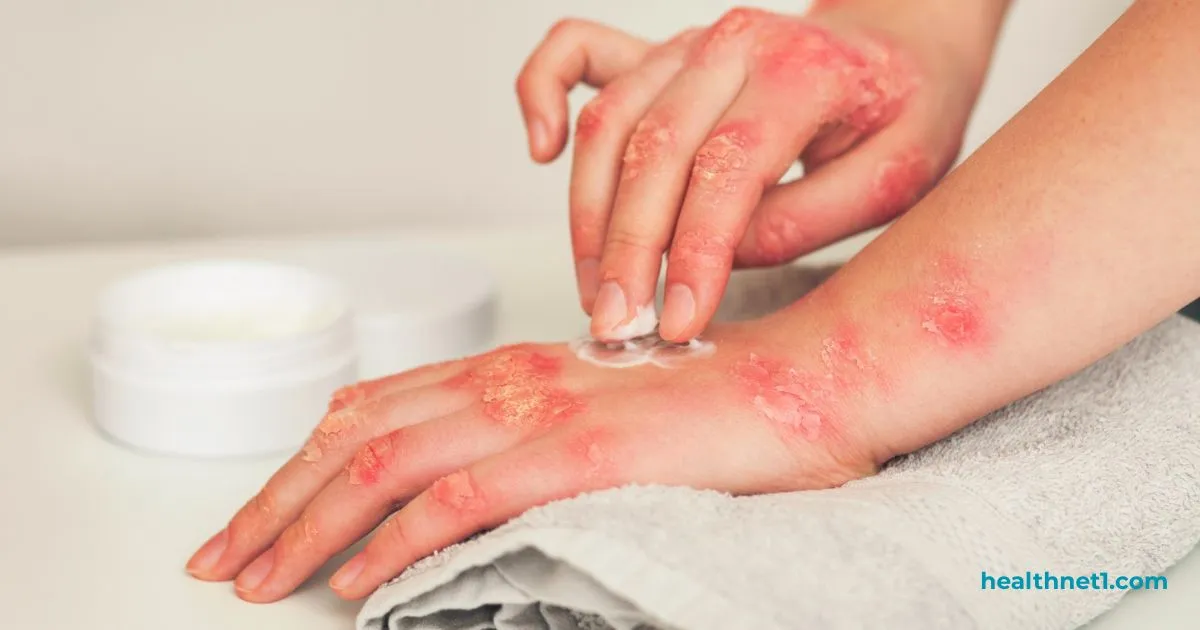If you’ve ever found yourself scratching a red, irritated patch of skin that just won’t go away, you know how uncomfortable fungal infections can be. They’re not only annoying but also surprisingly stubborn. You try a cream, it works for a bit, then—bam—it’s back. Sound familiar? You’re definitely not alone.
Millions of people deal with fungal skin infections each year, and while there are plenty of over-the-counter treatments, many come with side effects or short-term relief. That’s why more and more people like you are turning to natural remedies for fungal skin infections—safe, accessible solutions that support your skin’s healing process without harsh chemicals.
Table of Contents
This guide will walk you through what really works, why natural options can be powerful, and how to use them safely and effectively.
Understanding Fungal Skin Infections
Before diving into natural treatments, it’s helpful to understand what you’re actually dealing with.
Fungal skin infections happen when certain fungi—like Candida or Trichophyton—start multiplying on your skin. They thrive in warm, moist environments, which is why they often show up in places like your feet, underarms, groin, or skin folds.
Common types include:
- Athlete’s foot (tinea pedis) – typically between your toes, causing itching and burning.
- Ringworm (tinea corporis) – appears as red, circular patches.
- Jock itch (tinea cruris) – occurs around the groin and upper thighs.
- Yeast infections (Candida) – affect skin folds or other moist areas.
| Type of Infection | Common Area | Symptoms | Common Fungi |
| Athlete’s Foot | Between toes | Itching, cracking, peeling | T. rubrum |
| Ringworm | Scalp, body | Red circular rash | M. canis |
| Jock Itch | Groin | Itchy rash | T. mentagrophytes |
| Yeast Infection | Skin folds | Redness, soreness | Candida albicans |
Most fungal infections aren’t dangerous—but they are persistent. And if you’ve had one before, you know how easily they can come back.
Why You Might Prefer skin fungus
Chemical antifungal creams can be effective, but they’re not always ideal for long-term skin health. Some can cause dryness, peeling, or irritation, especially if your skin is sensitive.
Natural remedies, on the other hand, work gently and holistically. They don’t just target the fungus—they also support your body’s natural ability to heal. Many herbs and oils have been used for centuries for their antifungal and soothing properties.
Choosing natural care doesn’t mean ignoring science—it means using proven plant-based alternatives that are both effective and kind to your skin.
(If you’re interested in herbal approaches that support your overall health, check out Best Anti-Fungal Herbs for Skin and Gut Health.)
Top Natural Remedies for Fungal Skin Infections

Let’s explore some of the best natural antifungal remedies you can try safely at home.
1. Tea Tree Oil – A Potent Natural Antifungal
When it comes to fighting fungi, tea tree oil is one of nature’s most powerful tools. It contains compounds like terpinen-4-ol, which are known to destroy the cell walls of fungal organisms.
How to use:
- Mix a few drops of tea tree oil with a carrier oil (like coconut oil or olive oil).
- Apply the mixture to the affected area twice daily.
- Always perform a patch test first—tea tree oil is strong and can irritate sensitive skin when used undiluted.
Supported by research:
According to Healthline, studies show that tea tree oil is effective against several common fungal strains, including those that cause athlete’s foot and ringworm.
2. Aloe Vera – Cooling, Soothing, and Healing
If your skin feels hot, itchy, or inflamed, aloe vera brings instant relief. Beyond its well-known cooling effect, aloe has natural antifungal properties and helps the skin regenerate faster.
How to use:
- Apply fresh aloe vera gel directly to the infected area two to three times daily.
- Look for pure aloe products without alcohol or fragrances that could irritate your skin.
This is especially great if you have sensitive or dry skin, since aloe also hydrates and reduces redness.
3. Apple Cider Vinegar – Restores Your Skin’s pH Balance
The slightly acidic nature of apple cider vinegar (ACV) makes it unfriendly territory for fungi. It can help restore your skin’s natural pH, which often becomes unbalanced during infections.
How to use:
- Mix 1 part apple cider vinegar with 3 parts water.
- Use a clean cotton pad to dab it onto the infected area.
- Leave it on for 15–20 minutes, then rinse and dry.
💡 Tip: If your skin stings, dilute it further or try soaking your feet or hands in a vinegar bath for 15 minutes a day.
4. Coconut Oil – Gentle and Nourishing Defense
Coconut oil is rich in lauric acid and caprylic acid, both of which have strong antifungal and moisturizing effects. It’s gentle enough to use daily—even on delicate areas.
How to use:
- Apply a small amount of virgin coconut oil directly to the area two or three times daily.
- You can also mix it with a few drops of essential oils like tea tree or lavender for added antifungal power.
Coconut oil not only helps eliminate the fungus but also prevents your skin from drying or cracking during recovery.
5. Garlic – Nature’s Antifungal Powerhouse
Yes, garlic! It’s more than just a kitchen staple—it’s one of the oldest known antifungal remedies. The compound allicin in garlic fights several fungi, including Candida albicans.
How to use:
- Crush one or two fresh garlic cloves and mix with a tablespoon of coconut oil.
- Apply to the infected skin for 20–30 minutes, then rinse.
- Avoid applying raw garlic directly to the skin without mixing—it’s strong and may cause burns.
You can also add fresh garlic to your meals to strengthen your immune system from within.
6. Turmeric – Anti-inflammatory and Healing
Turmeric isn’t just for cooking—it’s a skincare powerhouse. Its active compound, curcumin, is both antifungal and anti-inflammatory, making it perfect for soothing irritated skin.
How to use:
- Mix 1 teaspoon of turmeric powder with coconut oil or aloe vera gel.
- Apply to the affected area for 15–20 minutes before rinsing.
- Be aware: turmeric can temporarily stain the skin or clothing.
How to Apply Natural Remedies Safely
Even natural ingredients can be powerful, so it’s important to use them correctly.
1. Patch Test First
Always test a small amount on your inner arm before applying to larger areas. If you notice redness, itching, or burning, discontinue use.
2. Maintain Proper Hygiene
- Keep the area clean and dry at all times.
- Wash your towels, clothes, and bedding regularly.
- Avoid sharing personal items like razors or loofahs.
3. Support Healing from the Inside
A strong immune system helps your body naturally fight fungi.
- Eat foods rich in vitamins A, C, E, and zinc.
- Cut back on refined sugars—fungi love glucose!
- Drink plenty of water and get adequate rest.
When to See a Doctor
While mild fungal infections often respond well to home treatments, it’s time to seek professional advice if:
- The infection spreads rapidly or becomes painful.
- You notice pus, bleeding, or swelling.
- Symptoms persist beyond 2–3 weeks of natural treatment.
- You have diabetes, a weakened immune system, or frequent recurrences.
In such cases, combining medical treatments with natural support can be the most effective approach.
For reference, WebMD notes that persistent infections often require prescription antifungals.
Natural vs. Conventional Treatments
| Aspect | Natural Remedies | Chemical Creams |
| Side Effects | Minimal, gentle | Possible irritation or dryness |
| Cost | Low | Moderate to high |
| Effectiveness | Gradual, supports healing | Fast, but may recur |
| Long-Term Skin Health | Supports skin microbiome | May disrupt balance |
Using both methods strategically can give you the best of both worlds—quick relief and lasting results.
Prevention Tips to Keep Fungal Infections Away

Once your skin clears up, prevention is key. You don’t want that fungus sneaking back.
- Keep skin dry: Especially between toes and skin folds.
- Wear breathable clothing: Cotton and linen are best.
- Use antifungal powders or sprays: Particularly in humid weather.
- Change socks and underwear daily.
- Eat a balanced diet: Limit sugar, processed foods, and alcohol.
Conclusion
Dealing with a fungal skin infection can feel like an endless cycle, but you’re not powerless. By combining good hygiene, balanced nutrition, and natural antifungal remedies, you can restore your skin’s balance and prevent future outbreaks.
Remember—your skin heals best when you treat it gently and consistently. Choose natural, evidence-backed solutions and give your body the support it needs to do what it does best: heal itself.
Start with one or two of the remedies above, be patient, and you’ll soon notice a difference. Your skin deserves that kind of care.
FAQ: Natural Remedies for Fungal Skin Infections
Q1: What is the most effective natural remedy for fungal skin infections?
Tea tree oil and coconut oil are among the most effective and well-researched natural treatments, known for their antifungal and soothing effects.
Q2: How long do natural remedies take to work?
It depends on the infection’s severity, but you can expect to see improvement within one to three weeks with regular use.
Q3: Can I combine several natural remedies?
Yes, as long as you test for skin sensitivity first. Aloe vera and coconut oil pair particularly well for hydration and healing.
Q4: Are natural remedies safe for children or sensitive skin?
Most are safe when diluted properly. Always perform a patch test and consult a pediatrician for young children.
Q5: Do I still need medical treatment if I use natural remedies?
For mild infections, natural care often works well on its own. For severe or recurring cases, combine it with professional treatment for best results.
Ready to take charge of your skin health naturally?
Start by trying one of these remedies today and pay attention to how your skin responds. For more holistic tips and research-backed natural solutions, explore more articles on HealthNet1.com — your trusted source for safe, science-informed wellness.

